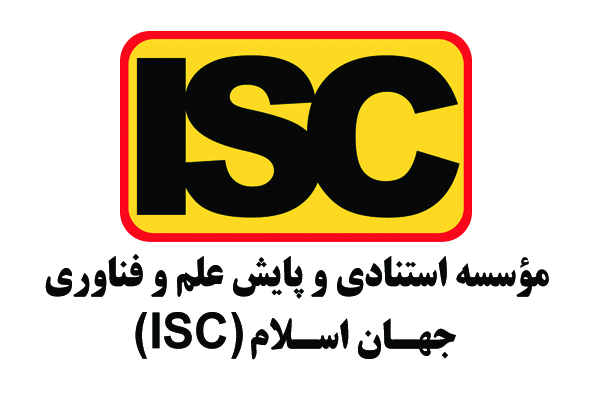Identification and Ranking of Entrepreneurial Development Indicators with an Industrial Employment Approach for University Graduates Using Meta-Synthesis Approach
Keywords:
Entrepreneurial University, University Entrepreneurship, Entrepreneurial Ecosystem, Industrial Graduate EmploymentAbstract
The primary objective of this article is to identify and rank the indicators of entrepreneurial development with an industrial employment approach for university graduates using the meta-synthesis approach. The statistical population of this research consists of experienced managers and experts in the field of entrepreneurial development in the industry, as well as entrepreneurship graduates. A purposive sampling method, which is a non-probability sampling method, was employed, and the perspectives of 16 industrial entrepreneurial development experts were utilized. To familiarize and gain insight into the entrepreneurial development model with an industrial employment approach for graduates of Islamic Azad University branches in Yazd province, as well as for better coordination and identification of research variables, interviews were conducted with several experts. This method yielded acceptable and influential results in identifying the components. Qualitative data content analysis was performed using the meta-synthesis method with the help of MAXQDA software to synthesize studies obtained from a systematic review centered around the topic of this research. To screen the identified indicators and select the main indicators, the fuzzy Delphi technique was used. The interpretive structural modeling (ISM) technique was employed to determine the appropriate activities for public companies, rank their importance, and identify relationships between the indicators. From the extracted indicators in related articles, after eliminating synonymous and frequently recurring indicators, and ultimately categorizing and grouping the final indicators, 12 categories and 64 codes were obtained. Furthermore, based on the frequency of codes, the highest repetition was attributed to the highest entropy. The innovation infrastructure in the field of information security had the highest entropy.
Downloads
References
Ahmadpour Daryani, M. (1999). Theoretical Definitions, Theories, and Models. Pardis Publications.
https://gu.ac.ir/file/30f6a923-08df-ec11-9ed6-
f1e/%D8%AC%D8%A7%D9%85%D8%B9%D9%87%20%D8%B4%D9%86%D8%A7%D8%B3%D
B%8C%20%D9%88%D8%B1%D9%88%D8%AF%DB%8C%201401.pdf
Ahmadpour Daryani, M. (2005). Entrepreneur, Definitions, Theories, Models. Pardis Publications.
https://www.gisoom.com/book/1428375/
Archibong, C., & Anyansi, A. (2004). Technology, Infrastructure and Entrepreneurship: Role of the Government in
Building a sustainable Economy. School of Business and Economics, North Carolian A & T State University.
https://www.researchgate.net/profile/Chi-Anyansi-Archibong
Buli, B. M. (2017). Entrepreneurial orientation, market orientation and performance of SMEs in the manufacturing
industry: Evidence from Ethiopian enterprises. Management Research Review, 40(3), 292-309.
https://doi.org/10.1108/MRR-07-2016-0173
Fry, F. (1993). A Planning Approach: Entrepreneurship. Prentice Hall, Inc.
https://books.google.com/books/about/Entrepreneurship.html?id=Rp8rAAAAYAAJ
Hayton, J. (2005). Promoting corporate entrepreneurship through human resource management practices: A Review of
empirical research. Human Resource Management Review, 15(1), 21-41. https://doi.org/10.1016/j.hrmr.2005.01.003
Jiménez-Jiménez, D., & Valle, R. S. (2011). Innovation, organizational learning, and performance. Journal of Business
Research, 64(4), 408-417. https://doi.org/10.1016/j.jbusres.2010.09.010
Liao, C. C., Wang, H. Y., Chuang, S. H., Shih, M. L., & Liu, C. C. (2010). Enhancing knowledge management for R&D
innovation and firm performance: An integrative view. African journal of business management, 4, 3026-3038.
nd_firm_performance_An_integrative_view
Saki, S., Shakiba, H., & Savari, M. (2013). Study of the relationship between organizational learning and organizational
innovation at University of Tehran. Journal of Organizational Learning and Leadership, 11(1), 1-19.
https://jomc.ut.ac.ir/article_29910.html
Salamzadeh, Y., Sangosanya, T. A., Salamzadeh, A., & Braga, V. (2022). Entrepreneurial universities and social capital:
The moderating role of entrepreneurial intention in the Malaysian context. The International Journal of Management
Education, 20(1). https://doi.org/10.1016/j.ijme.2022.100609
Zebihi, M. R., & Moghadasi, A. (2006). Entrepreneurship from Theory to Practice. Jahan Farda Publications.
https://www.gisoom.com/book/1625971/
Zhang, Q., Lim, J. S., & Cao, M. (2004). Innovation-driven learning in new product development: a conceptual model.
Industrial Management & Data Systems, 104(3), 252-261. https://doi.org/10.1108/02635570410525799
Zhao, F. (2005). Exploring the synergy between entrepreneurship and innovation. International Journal of
Entrepreneurial Behavior & Research, 11(1), 25-41. https://doi.org/10.1108/13552550510580825
Zhao, F., Barratt-Pugh, L., Suseno, Y., Standen, P., & Redmond, J. (2023). A framework for exploring digital
entrepreneurship development from a social interaction perspective. Journal of General Management, 48(2), 115-

Downloads
Published
Submitted
Revised
Accepted
Issue
Section
License
Copyright (c) 2024 Journal of Technology in Entrepreneurship and Strategic Management (JTESM)

This work is licensed under a Creative Commons Attribution-NonCommercial 4.0 International License.










